Professor Nerilie Abram
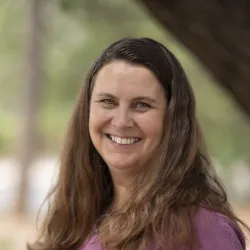
Content navigation
About
I study natural climate variability and human-caused climate change from the tropical oceans to Antarctica, and their impacts on Australia and the world. I was elected as a Fellow of the Australian Academy of Science in 2024.
I was a Coordinating Lead Author for the IPCC special report on the Ocean and Cryosphere in a Changing Climate released in 2019, and will be a Coordinating Lead Author for the IPCC 7th Assessment Report.
My research team at ANU was supported by ARC-funded projects through the Australian Centre for Excellence in Antarctic Science and the Centre of Excellence for the Weather of the 21st Century, and through funding from Minderoo Foundation.
In 2025 I took up the role of Chief Scientist at the Australian Antarctic Division. I retain an honorary role at ANU.

Where I've studied and worked
- 2011-2025: Research School of Earth Sciences, The Australian National University
- 2004-2011: British Antarctic Survey, Natural Environment Research Council (Cambridge, UK)
- 2000-2004: PhD, The Australian National University
- 1996-1999: BSc Advanced with honours and university medal, University of Sydney
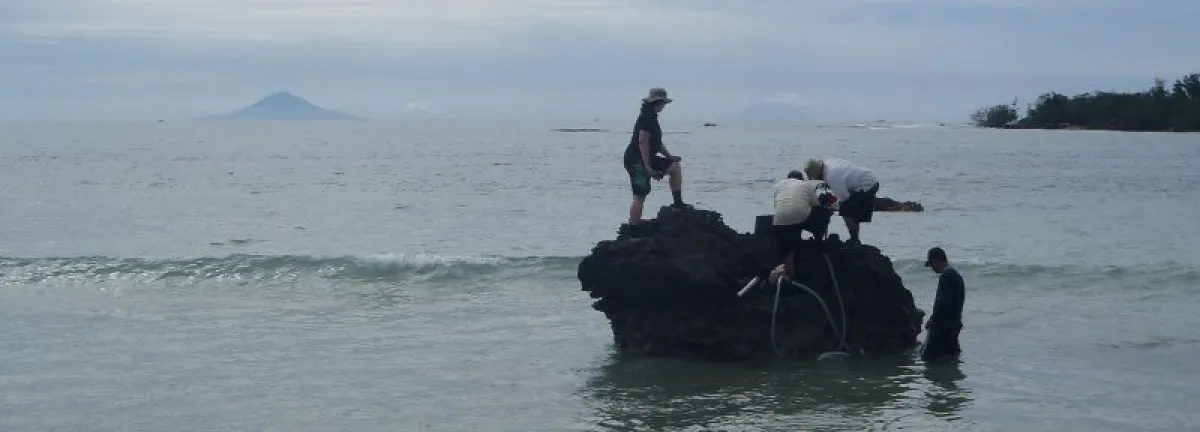
Images are from coral drilling of Krakatau tsunami blocks in Sunda Strait, 2012
Affiliations
- Climate & Ocean Geoscience, Member
- Palaeoenvironments, Researcher
Research interests
Research Highlights
Australia's Tinderbox Drought
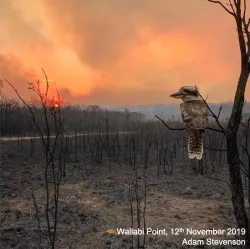
During 2017 – 2019, southeast Australia experienced three consecutive years of intense drought that were the driest event ever recorded, and threatened water supplies, damaged agricultural and ecological systems, and primed the Black Summer fire disaster. Work led by the Centre of Excellence for Climate Extremes has named this event the Tinderbox Drought to highlight the connection between drought and fire that typified this event. The Tinderbox Drought was an exceptionally extreme multi-year event that was caused by a sequence of events which combined to sustain and intensify the drought. The drought was more extreme than could have been anticipated from historical rainfall observations. Human-caused climate change played a role in causing and intensifying the drought, and is likely to cause future droughts to be hotter and more intense. Importantly, this comprehensive review also exemplifies the development of early career researcher teams and the interdisciplinary research advances that are made possible through ARC Centres of Excellence.
Devanand et al., (2023) Science Advances, doi: 10.1126/sciadv.adj3460. Links: paper briefing note
Response of the East Antarctic Ice Sheet to past and future climate change
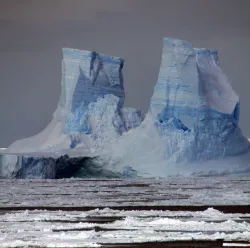
The vast East Antarctic ice sheet has often been viewed as being relatively insensitive to climate warming. But oberservations of ice loss in some parts of the ice sheet, as well as paleoclimate evidence for large ice losses at times of only moderate climate warming are challenging this view. This review paper finds that substantial ice loss from East Antarctica over coming centuries can still be avoided, but only if the Paris Agreement goal of limiting warming to well below 2°C is met.
Stokes et al., (2022) Nature, doi: 10.1038/s41586-022-04946-0. Links: paper press release Conversation article
Connections of climate variability and change to bushfires in southeast Australia

This comprehensive review of the climate influences on bushfires in southeast Australia was a rapid response to Australia’s Black Summer disaster. The paper demonstrated the emergence of fire weather outside of historical experience, and the multiple climate variability and change factors expected to increase future fire risk. It also identified aspects of weather and climate where future changes in southeast Australia were uncertain, leading to new research that identified an increase in the frequency and strength of fire-promoting cold fronts over southeast Australia.
Abram et al., (2021) Communications Earth and Environment, doi: 10.1038/s43247-020-00065-8. Links: paper twitter summary twitter summary on backstory and open letter
Cai, Abram et al., (2022) Environmental Research Letters, doi: 10.1088/1748-9326/ac8e88. Links: paper
Indian Ocean Dipole variability during the last millennium
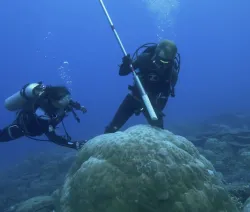
By reconstructing 500-years of monthly-resolved Indian Ocean Dipole variability, this study was the first to demonstrate a tight coupling of interannual variability between the Indian and Pacific oceans, and potential for much larger IOD events than known historically, even without human forcing of the climate. Using this new paleoclimate evidence alongside observations and climate simulations increases confidence in projected future intensification of the IOD.
Abram et al., (2020) Nature, doi: 10.1038/s41586-020-2084-4. Links: paper data Conversation article
Abram et al., (2020) Quaternary Science Reviews, doi: https://doi.org/10.1016/j.quascirev.2020.106302.
IPCC Special Report on the Ocean and Cryosphere in a Changing Climate
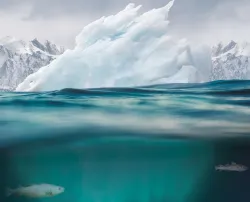
The ocean and cyrosphere (frozen parts of our planet) are essential for our life on Earth, but climate change is already impacting from the tops of our highest mountains to the deepest parts of the ocean. This assessment by the Intergovernmental Panel on Climate Change involved more than 100 authors from 36 countries, who reviewed almost 7000 scientific studies and responded to more than 30,000 review comments. Our assessment shows how the ocean and cryosphere are changing, what our choices for the future will mean for how much and how quickly they continue to change, and what options are available to help people and ecosystems adapt to unavoidable future change.
IPCC (2019). Links: report webpage Public lecture Radio interview The Conversation
Early onset of industrial-era warming across the oceans and continents
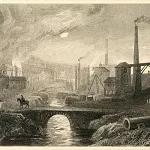
Instrumental records of temperature provide unambiguous evidence for climate warming caused by greenhouse gas emissions during the 20th and 21st Centuries. But is this the full picture? Using palaeoclimate reconstructions and simulations spanning the last 500 years, this research finds that industrial-era warming first began in some parts of the world as early as the 1830s. The small but measureable response of Earth's climate to rising greenhouse gas levels during the 19th century needs to be considered to fully account for how much and how quickly humans have altered our climate. Read more in The Conversation.
Abram et al., and the PAGES 2k Consortium (2016) Nature, 536, 411-418. Links: paper data press release video
Tropical sea-surface temperatures for the past four centuries reconstructed from coral archives
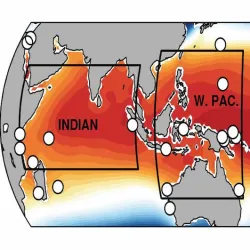
Reconstructions of natural and human-induced climate change over the last millennium are primarily derived from land-based records, making it difficult to assess how climate changes have evolved across the large areas of ocean that cover the Earth. In this study, an international team of researchers has synthesised annually resolved coral records to produce sea surface temperature histories over four tropical ocean regions. The work is part of the Ocean2k project, as part of the wider Past Global Changes 2k initiative (PAGES2k).
Tierney, Abram et al., (2015) Paleoceanography, doi: 10.1002/2014PA002717. Links: paper data
Evolution of the Southern Annular Mode during the past millennium
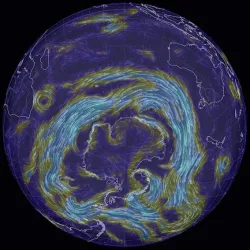
The winds that circle around the Southern Ocean determine how much rainfall falls over southern parts of Australia. These winds also affect the temperature of the ocean and air around Antarctica. This study shows that increasing greenhouse gas levels are causing the Southern Ocean winds to get stronger and pull in tighter around Antarctica, meaning that Australia misses out on winter rain and making parts of the Antarctic ice sheets more susceptible to melting.
Abram et al., (2014) Nature Climate Change, 4, 564-569. Links: paper data press release video
Acceleration of snow melt in an Antarctic Peninsula ice core during the twentieth century
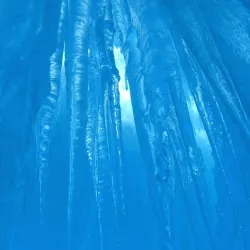
This unique record of past ice melt shows that the current levels of melting on the Antarctic Peninsula are higher than at any other time over at least the last 1000 years. Melting has been increasing dramatically since the mid 20th century and the record gives a clear example of the potential for rapid increases in melting to even small amounts of warming in places where summer temperatures are close to 0 degreesC. Read more in the News and Views and The Conversation commentary pieces on this study
Abram et al., (2013) Nature Geoscience, 6, 404-411. Links: paper data press release
Recent Antarctic Peninsula warming relative to Holocene climate and ice-shelf history

The Antarctic Peninsula is warming faster than any other place in the Southern Hemisphere. In this work we developed the first ice core record from the Antarctic Peninsula spanning the full Holocene, showing that the very rapid rate warming in this region over the past 50 years is very unusual in a geological context. Read more in the News and Views and Real Climate pieces written by Eric Steig.
Mulvaney, Abram et al., (2012) Nature, 498, 141-144. Links: paper data press release
Ice core evidence for a 20th century decline of sea ice in the Bellingshausen Sea, Antarctica
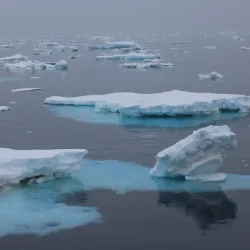
Using the chemical fingerprints in an array of ice cores from around Antarctica this study was able to show the different regional patterns of sea ice retreat around Antarctica over the 20th Century. These long sea ice reconstructions contrast with the short satellite observations of Antarctic sea ice change, which have seen an overall increase in the extent of Antarctic sea ice since the 1980s.
Abram et al., (2010) Journal of Geophysical Research, 115, D23101, doi:10.1029/2010JD014644. Links: paper BAS featured research. This 2013 invited review paper gives more details about how we can use ice cores to reconstruct Antarctic sea ice changes.
Oscillations in the southern extent of the Indo-Pacific Warm Pool during the mid-Holocene
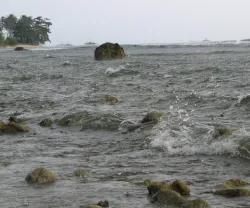
This study showed that accurate assessments of past ocean temperatures can be obtained by looking at the bulk geochemical signal of large groups of fossil corals. Applying this to corals from offshore of Sumatra and Papua New Guinea showed that the very warm waters that lie to the north of Australia (and are important for bringing rain to parts of the country) have moved closer and further way from Australia at different times during the last 7000 years
Abram et al., (2009) Quaternary Science Reviews, 28, 2794-2803. Links: paper data
Recent intensification of tropical climate variability in the Indian Ocean
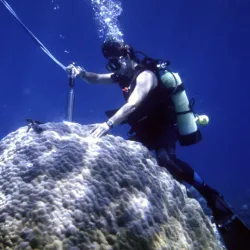
This study used corals to extend the short instrumental record of the Indian Ocean Dipole (the Indian Ocean's equivalent to El Nino) back by more than 100 years. This long perspective shows how unusual the recent cluster of strong and frequent IOD events is; whereas these events typically only occurred every 20 years at the start of the 1900s, we are now seeing events roughly every 4 years.
Abram et al., (2008) Nature Geoscience, 1, 849-853. Links: paper data
Seasonal characteristics of the Indian Ocean Dipole during the Holocene epoch
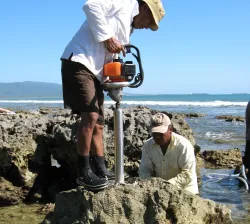
Detailed analysis of the chemistry of fossil coral skeletons showed how the temperature and rainfall changes during Indian Ocean Dipole events changed when the Asian monsoon was stronger than today. Understanding the potential for future changes in the duration and intensity of Indian Ocean Dipole droughts will be important for climate change adaption in the Indian Ocean region.
Abram et al., (2007) Nature, 445, 299-302. Links: paper data news & views
Coral reef death during the 1997 Indian Ocean Dipole linked to Indonesian wildfires

Our team were Eureka Prize finalists for the unique finding that nutrients from wildfires can fertilise the ocean and lead to destructive algal blooms. The findings were based on the death of a 400km long section of reef off the coast of Sumatra following massive wildfires in 2007.
Abram et al., (2003) Science, 301, 952-955. Links: paper
Projects
Supervised students
Location
Jaeger 1, G22
Publications

You can access an up-to-date record of my publication history through Google Scholar. Some of my publications require an academic library subscription to read the full content. Please email me if you aren't able to access one of my papers and would like me to send you a pdf copy.
Funding acknowledgements give details for papers where the Australian Research Council supported my work through project costs and/or salary.
2023
Walter, R. M., Sayani, H. R., Felis, T., Cobb, K. M., Abram, N. J., Arzey, A. K., Atwood, A. R., Brenner, L. D., Dassié, É. P., DeLong, K. L., Ellis, B., Fischer, M. J., Goodkin, N. F., Hargreaves, J. A., Kilbourne, K. H., Krawczyk, H., McKay, N. P., Murty, S. A., Ramos, R. D., Reed, E. V., Samanta, D., Sanchez, S. C., Zinke, J., and the PAGES CoralHydro2k Project Members. (2023). The CoralHydro2k Database: a global, actively curated compilation of coral δ18O and Sr/Ca proxy records of tropical ocean hydrology and temperature for the Common Era, Earth System Science Data, https://doi.org/10.5194/essd-2022-172. Funding support from CE170100023 and FT160100029.
Priestley, S.C., Treble, P.C., Griffiths, A.D., Baker, A., Abram, N.J. and Meredith, K.T. (in press). Caves demonstrate decrease in rainfall recharge of groundwater is unprecedented for the last 800 years. Communications Earth and Environment. Funding support from CE170100023 and DP140102059.
Jackson, S. L., Vance, T. R., Crockart, C., Moy, A., Plummer, C., and Abram, N.J. (2023 in revision). Climatology of the Mount Brown South ice core site in East Antarctica: implications for the interpretation of a water isotope record, Climate of the Past, https://doi.org/10.5194/egusphere-2022-1171. Funding support from CE170100023 and SR200100008.
Abram, N.J. (2023). What can we expect from the final UN climate report? And what is the IPCC anyway? The Conversation.
2022
Stokes, C.R., Abram, N.J., Bentley, M.J., Edwards, T.L., England, M.H., Foppert, A., Jamieson, S.S.R., Jones, R.S., King, M.A., Lenaerts, J.T.M., Medley, B., Miles, B.W.J., Paxman, G.J.G., Ritz, C., van de Flierdt, T. and Whitehouse, P. (2022). Response of the East Antarctic Ice Sheet to past and future climate change. Nature 608, 275–286 (2022). https://doi.org/10.1038/s41586-022-04946-0. Funding support from FT160100029 and SR200100008.
Feng, P., Wang, B., Macadam, I., Taschetto, A.S., Abram, N.J., Luo, J-J., King, A.D., Chen, Y., Li, Y., Liu, D.L., Yu, Q. and Hu, K. (2022). Increasing dominance of Indian Ocean variability impacts Australian wheat yields. Nature Food 3, 862–870. https://doi.org/10.1038/s43016-022-00613-9 Funding support from CE170100023.
Cai., D., Abram, N.J., Sharples, J.J., and Perkins-Kirkpatrick, S. (2022). Increasing intensity and frequency of cold fronts contributed to Australia's 2019-2020 Black Summer fire disaster. Environmental Research Letters, 17, 094044, doi: 10.1088/1748-9326/ac8e88. Funding support from FT160100029 and CE170100023.
Wright, N. M., Krause, C. E., Phipps, S. J., Boschat, G., and Abram, N.J. (2022). Influence of long-term changes in solar irradiance forcing on the Southern Annular Mode, Climate of the Past, 18, 1509–1528, https://doi.org/10.5194/cp-18-1509-2022. Funding support from FT160100029 and CE170100023.
Treble, P.C., Baker, A., Abram, N.J. et al. (2022). Ubiquitous karst hydrological control on speleothem oxygen isotope variability in a global study. Communications Earth and Environment 3, 29. https://doi.org/10.1038/s43247-022-00347-3. Funding support from DP140102059.
Erhardt, T., Bigler, M., Federer, U., Gfeller, G., Leuenberger, D., Stowasser, O., Röthlisberger, R., Schüpbach, S., Ruth, U., Twarloh, B., Wegner, A., Goto-Azuma, K., Kuramoto, T., Kjær, H. A., Vallelonga, P. T., Siggaard-Andersen, M.-L., Hansson, M. E., Benton, A. K., Fleet, L. G., Mulvaney, R., Thomas, E. R., Abram, N., Stocker, T. F., and Fischer, H. (2022). High-resolution aerosol concentration data from the Greenland NorthGRIP and NEEM deep ice cores, Earth System Science Data, 14, 1215–1231, https://doi.org/10.5194/essd-14-1215-2022.
Abram, N.J. (2022). I am a climate scientist - and this is my plea to our newly elected politicians. The Conversation.
Abram, N.J. (2022). I am a climate scientist - and this is my plea to our newly elected politicians. In Hopkins (ed.) 2022: Reckoning with Power and Privilege. ISBN: 9781760762995.
2021
Abram, N.J., Henley, B.J., Sen Gupta, A. et al. (2021). Connections of climate change and variability to large and extreme forest fires in southeast Australia. Commun Earth Environ 2, 8, https://doi.org/10.1038/s43247-020-00065-8. Funding support from FT160100029 and CE170100023.
Crockart, C. K., Vance, T. R., Fraser, A. D., Abram, N. J., Criscitiello, A. S., Curran, M. A. J., Favier, V., Gallant, A. J. E., Kjær, H. A., Klekociuk, A. R., Jong, L. M., Moy, A. D., Plummer, C. T., Vallelonga, P. T., Wille, J., and Zhang, L. (2021). El Niño Southern Oscillation signal in a new East Antarctic ice core, Mount Brown South, Climate of the Past. https://doi.org/10.5194/cp-17-1795-2021. Funding support from CE170100023.
McConnell, J.R., Chellman, N.J., Mulvaney, R., Eckhardt, S., Stohl, A., Plunkett, G., Kipfstuhl, S., Freitag, J., Isaksson, E., Gleason, K.E., Brugger, S.O., McWethy, D.B., Abram, N.J., Liu, P. and Aristarain, A. (2021). Hemispheric black carbon increase after the 13th-century Māori arrival in New Zealand. Nature, 598, 82–85. https://doi.org/10.1038/s41586-021-03858-9.
Ummenhofer, C.C., Murty, S.A., Sprintall, J., Lee, T. and Abram. N.J. (2021). Heat and freshwater changes in the Indian Ocean region. Nature Reviews Earth and Environment, 2, 525–541. https://doi.org/10.1038/s43017-021-00192-6. Funding support from FT160100029 and CE170100023.
Abram, N.J., Kaufman, D., McGregor, H., Martrat, B., Bothe, O. and Linderholm, H. (2020). Global climate goes regional, and vice versa: Reflecting on 14 years of the PAGES 2k Network. Past Global Changes Magazine, 29 (1), 16-17.
King, A., Abram, N.J. and Perkins-Kirkpatrick, S. (2021). There's no end to the damage humans can wreak on the climate. This is how bad its likely to get. The Conversation.
McGregor, S., Abram, N.J. and Reef, R. (2021). 'How high above sea level am I?' If you've googled this, your likely asking the wrong questions - an expert explains. The Conversation.
Abram, N.J., King, A., Pitman, A., Jakob, C., Arblaster, J., Alexander, L., Perkins-Kirkpatrick, S., McGregor, S. and Sherwood, S. (2021). Yes, a few climate models give unexpected predictions - but the technology remains a powerful tool. The Conversation.
Abram, N.J., Perkins-Kirkpatrick, S. and De Kauwe, M. (2021). Matt Canavan suggested the cold snap means global warming isn't real. We bust this and 2 other climate myths. The Conversation.
2020
Abram, N.J., Wright, N.M., Ellis, B., Dixon, B.C., Wurtzel, J.B., England, M.H. Ummenhofer, C.C., Philibosian, B., Cahyarini, S.Y., Yu, T.-L., Shen, C.-C., Cheng, H., Edwards, R,L. and Heslop, D. (2020). Coupling of Indo-Pacific climate variability over the last millennium. Nature 579, 385-392, https://doi.org/10.1038/s41586-020-2084-4. Funding support from DP110101161, DP140102059, FT160100029 and CE170100023.
- Database archive: https://www.ncdc.noaa.gov/paleo-search/study/28451
Abram, N.J., Hargreaves, J.A., Wright, N.M., Thirumalai, K., Ummenhofer, C.C. and England, M.H. (2020). Palaeoclimate perspectives on the Indian Ocean Dipole. Quaternary Science Reviews 237, 106302, https://doi.org/10.1016/j.quascirev.2020.106302 [invited contribution]. Funding support from FT160100029 and CE170100023.
Konecky, B. L., McKay, N. P., Churakova (Sidorova), O. V., Comas-Bru, L., Dassié, E. P., DeLong, K. L., Falster, G. M., Fischer, M. J., Jones, M. D., Jonkers, L., Kaufman, D. S., Leduc, G., Managave, S. R., Martrat, B., Opel, T., Orsi, A. J., Partin, J. W., Sayani, H. R., Thomas, E. K., Thompson, D. M., Tyler, J. J., Abram, N. J., Atwood, A. R., Cartapanis, O., Conroy, J. L., Curran, M. A., Dee, S. G., Deininger, M., Divine, D. V., Kern, Z., Porter, T. J., Stevenson, S. L., von Gunten, L., and Iso2k Project Members (2020). The Iso2k database: a global compilation of paleo-δ18O and δ2H records to aid understanding of Common Era climate, Earth Syst. Sci. Data, 12, 2261–2288, https://doi.org/10.5194/essd-12-2261-2020
- Database archive: https://www.ncdc.noaa.gov/paleo/study/29593
Wright, N.M., Ellis, B. and Abram, N.J. (2020). A rare natural phenomenon brings severe drought to Australia. Climate change is making it more common. The Conversation.
2019
Abram, N.J. (2019). Australia's Angry Summer: This is what climate change looks like. Scientific American. 31st December 2019.
IPCC Special Report on the Ocean and Cryosphere in a Changing Climate (2019). Monaco, 25th September 2019. Contributions include:
- • IPCC (2019), Summary for Policy Makers.
- • Abram, Gattuso, Prakash et al., (2019), Chapter 1: Framing and Context.
- • Abram et al., (2019), Cross-Chapter Box 1: Scenarios, Pathways and Reference Periods.
- • Adler, Oppenheimer, Abram et al., (2019), Cross-Chapter Box 5: Confidence and Deep Uncertainty.
- • See livestream video of public lecture, listen to ABC Radio National interview, read our Conversation article
Freund, M.B., Henley, B.J., Karoly, D.J., McGregor, H.V., Abram, N.J., and Dommenget, D. (2019). Higher frequency of Central Pacific El Niño events in recent decades. Nature Geoscience. doi: 10.1038/s41561-019-0353-3. Funding support from FT160100029 and CE170100023.
- Associated article: Freund, M.B., Henley, B.J., Karoly, D.J., McGregor, H.V., and Abram, N.J., (2019). El Niño has rapidly become stronger and stranger, according to coral records. The Conversation
Datwyler, C., Abram, N.J., Grosjean, M., Wahl, E., Neukom, R. (2019). ENSO variability, teleconnection changes and response to large volcanic eruptions since AD 1000. International Journal of Climatology. doi: 10.1002/joc.5983. Funding support from FT160100029.
Dey, R., Lewis, S., and Abram, N.J. (2019). Investigating observed northwest Australian rainfall trends in CMIP5 detection and attribution experiments. International Journal of Climatology, 39 (1), 112-127, doi: 10.1002/joc.5788. Funding support from FT160100029 and CE110001028.
Dey, R., Lewis, S., Arblaster, J., and Abram, N.J. (2019). A Review of Past and Projected Changes in Australia’s Precipitation: Trends, Means and Extremes. WIRES Climate Change, https://doi.org/10.1002/wcc.577. Funding support from FT160100029 and CE110001028.
Ellis, B., Grant, K., Mallela, J., Abram, N.J. (2019). Is XRF core scanning a viable method of coral palaeoclimate temperature reconstructions? Quaternary International. doi: 10.1016/j.quaint.2018.11.044. Funding support from FT160100029, DP140102059, and CE110001028.
Krause, C.E., Gagan, M.K., Dunbar, G.B., Helstrom, J.C., Cheng, H., Edwards, R.L., Hantoro, W.S., Abram, N.J., and Rifai, H. (2019). Meridional and zonal drivers of Australasian monsoon hydroclimate over the last 40,000 years. Earth and Planetary Science Letters, 513, 103-112, doi: 10.1016/j/epsl.2019.01.045. Funding support from DP110101161, FT160100029 and CE110001028.
Klein, F., Abram, N.J., Curran, M.A.J., Goosse, H., Goursaud, S., Masson-Delmotte, V., Moy, A., Neukom, R., Orsi, A., Sjolte, J., Steiger, N., Stenni, B., and Werner, M. (2019). Assessing the robustness of Antarctic temperature reconstructions over the past two millennia using pseudoproxy and data assimilation experiments. Climate of the Past. 15, 661-684, doi: 10.5194/cp-15-661-2019. Funding support from FT160100029 and CE170100023.
Turney, C.S.M, McGregor, H.V., Francus, P., Abram, N., Evans, M.N., Goosse, H., von Gunten, L., Kaufman, D., Linderholm, H., Loutre, M.F. and Neukom, R. (2019). Introduction to the Special Issue on Climate of the Past 2000 Years: Global and Regional Syntheses. Climate of the Past, 16, 611-615, doi: 10.5194/cp-15-611-2019
Wurtzel, J.B., Abram, N.J., Lewis, S.E., Bajo, P., Helstrom, J.C., Troitzsch, U. and Heslop, D. (2018). Tropical Indo-Pacific hydroclimate response to North Atlantic forcing during the last deglaciation as recorded by a speleothem from Sumatra, Indonesia. Earth and Planetary Science Letters, 492, 264-278, https://doi.org/10.1016/j.epsl.2018.04.001Funding support from DP110101161 and DP140102059.
- Database archive: https://www.ncdc.noaa.gov/paleo/study/23790
2018
Abram, N.J. (2018). Past warming events in the Arctic linked to shifting winds in the Antarctic. Nature, 563, 630-631 (News and Views).
Fischer, H., Meissner, K., Mix, A., et al., including Abram N.J. (2018), Palaeoclimate constraints on the impact of 2 oC anthropogenic warming and beyond. Nature Geoscience. doi: 10.1038/s41561-018-0146-0. Funding support from FT160100029 and CE170100023.
Kaufman, D. and PAGES 2k special-issue editorial team, including Abram, N.J. (2018), Technical Note: Open-paleo-data implementation pilot – The PAGES 2k special issue, Climate of the Past, https://doi.org/10.5194/cp-14-593-2018. Funding support from FT160100029.
NEEM Aerosol Community, led by Fischer, H. and including Abram, N.J. (2018), Greenland records of aerosol source and atmospheric lifetime changes from the Eemian to the Holocene. Nature Communications, 9:1476, doi: 10.1038/s41467-018-03924-3
Sigl, M., Abram, N. J., Gabrieli, J., Jenk, T. M., Osmont, D., and Schwikowski, M. (2018), 19th century glacier retreat in the Alps preceded the emergence of industrial black carbon deposition on high-alpine glaciers, The Cryosphere, https://doi.org/10.5194/tc-12-3311-2018
2017
Abram, N.J. (2017). FactCheck Q&A: Was it four degrees hotter 110,000 years ago? The Conversation.
Abram, N.J. (2017). FactCheck Q&A: Was it four degrees hotter 110,000 years ago? In: Watson, J. The Conversation Yearbook 2017: 50 articles that informed public debate. Melbourne University Press, ISBN: 9780522872668.
Dasse, E., and 37 others including Abram, N.J. (2017). Saving our marine archives. Eos, 98, https://doi.org/10.1029/2017EO068159.
Datwyler, C., Neukom, R., Abram, N.J., Gallant, A., Grosjean, M., Jacques-Coper, M., Karoly, D., and Villalba, R. (2017). Teleconnection stationarity, variability and trends of the Southern Annular Mode (SAM) during the last millennium. Climate Dynamics, doi:10.1007/s00382-017-4015-0.
- Database archive: https://www.ncdc.noaa.gov/paleo/study/23130
Henley, B, and Abram, N.J. (2017). The three-minute story of 800,000 years of climate change with a sting in the tail. The Conversation (including YouTube video).
Hessl, A., Allen, K., Vance, T., Abram, N.J. and Saunders, K. (2017). Reconstructions of the Southern Annular Mode (SAM) during the Last Millennium. Progress in Physical Geography. doi:10.1177/0309133317743165. Funding support from DP140102059.
PAGES 2k Consortium, led by Emile-Geay, J. and including Abram, N.J. (2017). A global multiproxy database for temperature reconstructions of the Common Era. Nature Scientific Data, doi: 10.1038/sdata.2017.88
- Database archive: https://www.ncdc.noaa.gov/paleo/study/21171
Stenni, B., Curran, M., Abram, N.J., Orsi, A., and 14 others from the Antarctica 2k working group (2017). Antarctic climate variability at regional and continental scales over the last 2,000 years, Climate of the Past, doi:10.5194/cp-13-1609-2017. Funding support from DP140102059 and CE110001028.
- Database archive: https://www.ncdc.noaa.gov/paleo/study/22589
Turner, J., Comiso, J., and 20 co-signatories including Abram, N.J. (2017). Solve Antarctica's sea-ice puzzle. Nature, 547, 275–277, doi:10.1038/547275a
2016
Abram, N.J., McGregor, H.V., Tierney, J.E., Evans, M.N., McKay, N.P., Kaufman, D.S. and the PAGES 2k Consortium (2016). Early onset of industrial-era warming across the oceans and continents. Nature, 536, 411-418, doi:10.1038/nature19082. Funding support from DP110101161 and DP140102059.
- Associated article: McGregor, H.V., Abram, N.J., Gergis, J. and Phipps, S. (2016). The Industrial Revolution kick-started global warming much earlier than we realised. The Conversation
- Press Release and Video
- Database and code archive: https://www.ncdc.noaa.gov/paleo/study/20083
Jones, J.M., Gille, S.T., Goosse, H., Abram, N.J., and 21 other co-authors (2016). Assessing recent trends in high-latitude Southern Hemisphere surface climate. Nature Climate Change, 6, 917-926, doi:10.1038/nclimate3103. Funding support from DP110101161 and DP140102059.
- Associated article: Abram, N.J., England, M.E., and Vance, T.R. (2016). Record high to record low: what on earth is happening to Antarctica's sea ice? The Conversation
Abram, N.J. (2016). Climate's Playground. Nature Geoscience, doi:10.1038/ngeo2856.
Abram, N.J. (2016). Climate shenanigans at the ends of the Earth: why has sea ice gone haywire? The Conversation.
Hobbs, W., Curran, M.A.J., Abram, N.J. and Thomas, E.R. (2016). Century-scale perspectives on observed and simulated Southern Ocean sea ice trends. Journal of Geophysical Research, 121, 7804-7818, doi: 10.1002/2016JC012111. Funding support from DP110101161.
Thomas, E.R. and Abram, N.J. (2016). Ice core reconstruction of sea ice change in the Amundsen-Ross Seas since 1702AD. Geophysical Research Letters, 43, 5309-5317, doi: 10.1002/2016GL068130. Funding support from DP110101161.
Vance, T., Roberts, J., Moy, A., Curran, M., Tozer, C., Gallant, A., Abram, N.J., van Ommen, T., Young, D., Blankenship, D., Siegert, M., and Grima, C. (2016). Optimal site selection for a high resolution ice core record in East Antarctica. Climate of the Past, 12, 595-610, doi:10.5194/cp-12-595-2016. Funding support from DP110101161 and DP140102059.
2015
Tierney, J.E., Abram, N.J., Anchukaitis, K.J., Evans, M.N., Giry, C., Kilbourne, K.H., Saenger, C.P., Wu, H.C., Zinke, J. (2015). Tropical sea-surface temperatures for the past four centuries reconstructed from coral archives. Paleoceanography, 30, 226-252, doi: 10.1002/2014PA002717. Funding support from DP110101161 and DP140102059.
- Database archive: https://www.ncdc.noaa.gov/paleo/study/17955
Abram, N.J., Dixon, B.C., Rosevear, M.G., Plunkett, B., Gagan, M.K., Hantoro, W.S. and Phipps, S.J. (2015). Optimised coral records of the Indian Ocean Dipole: an assessment of location and length considerations. Paleoceanography, 30, 1391-1405, doi: 10.1002/2015PA002810. Funding support from DP110101161 and DP140102059.
- Data archive: https://www.ncdc.noaa.gov/paleo/study/18895
King, P.L., Edwards, A., and Abram, N.J. (2015) Recognising biases that affect women geoscientists in the workplace. Elements Magazine, 11 (April), 88-89.
2014
Abram, N.J. (2014). Antarctic ice: going, going, ... In: The Best Australian Science Writing 2014 (ed. A. Hay).
Murphy, E.J., Clarke, A., Abram, N.J. and Turner, J. (2014). Variability of sea-ice in the northern Weddell Sea during the 20th century. Journal of Geophysical Research. doi:10.1002/2013JC009511. Funding support from DP110101161.
Abram, N.J., Mulvaney, R., Vimeux, F., Phipps, S.J. Turner, J. and England, M.E. (2014). Evolution of the Southern Annular Mode during the past millennium. Nature Climate Change, 4, 564-569. doi:10.1038/nclimate2235. Funding support from DP140102059 and DP110101161.
- Press Release and Video
- Data archive: https://www.ncdc.noaa.gov/paleo/study/16197
2013
Abram, N.J. (2013). Antarctic ice...going, going,gone? In: The Curious Country (ed. L. Dayton). pp. 14-19. From the Office of the Chief Scientist and available as a free e-book through ANU Press
Abram, N.J., Mulvaney, R., Wolff, E.W., Triest, J., Kipfstuhl, S., Trusel, L.D., Vimeux, F., Fleet, L. and Arrowsmith, C. (2013). Acceleration of snow melt in an Antarctic Peninsula ice core during the twentieth century. Nature Geoscience, 6, 404-411, doi:10.1038/ngeo1787. Funding support from DP110101161.
- Data archive: https://www.ncdc.noaa.gov/paleo/study/14201
Abram, N.J., Wolff, E.W. and Curran, M.A.J (2013). A review of sea ice proxy information from polar ice cores.Quaternary Science Reviews, doi:10.1016/j.quascirev.2013.01.011. Funding support from DP110101161.
2012
Mulvaney R.*, Abram, N.J.*, Hindmarsh, R.C.A., Arrowsmith C., Fleet L., Triest J., Sime, L.C., Alemany O. and Foord, S. Recent Antarctic Peninsula warming relative to Holocene climate and ice shelf history (2012),Nature, 489, 141-144, doi:10.1038/nature11391. *equal contributions. Funding support from DP110101161.
- Data archive: https://www.ncdc.noaa.gov/paleo/study/13954
Wheatley, J.J., Blackwell, P.G., Abram, N.J., McConnell, J.R., Thomas, E.R. and Wolff, E.W. (2012). Automated ice-core layer-counting with strong univariate signals. Climate of the Past 8, 1869-1879, doi:10.5194/cp-8-1869-2012
2011
Abram, N.J., Mulvaney, R. and Arrowsmith, C (2011). Environmental signals in a highly resolved ice core from James Ross Island, Antarctica. Journal of Geophysical Research. 116, D20116, doi:10.1029/2011JD016147
D’Arrigo R., Abram N.J., Ummenhoffer C., Palmer J. and Mudelsee M. (2011). Reconstructed streamflow for Citarum River, Java, Indonesia: linkages to tropical climate dynamics. Climate Dynamics 36, 451-462, doi:10.1007/s00382-009-0717-2.
Gagan, M.K. and Abram, N.J. (2011). Stable isotopes and trace elements. In Hopley, D. (ed) Encyclopedia of modern coral reefs: structure, form and process. Encyclopedia of Earth Science Series, Springer-Verlag.
2010
Abram, N.J., Thomas, E.R, McConnell, J.R., Mulvaney, R., Bracegirdle, T.J., Sime, L.C., and Aristarain, A.J. (2010). Ice core evidence for a 20th century decline of sea ice in the Bellingshausen Sea, Antarctica. Journal of Geophysical Research 115, D23101, doi:10.1029/2010JD014644.
Rothlisberger R., Crosta X., Abram N.J., Armand L. and Wolff E.W. (2010). Potential and limitations of marine and ice core proxies: An example from the Indian Ocean sector. Quaternary Science Reviews 29, 296-302, doi:10.1016/j.quascirev.2009.10.005.
2009
Abram N.J., McGregor H.V., Gagan M.K. Hantoro W.S. and Suwargadi B.W. (2009). Oscillations in the southern extent of the Indo-Pacific Warm Pool during the mid-Holocene. Quaternary Science Reviews 28, 2794-2803, doi:10.1016/j.quascirev.2009.07.006. Funding support from DP0663227.
- Data archive: https://www.ncdc.noaa.gov/paleo/study/9819
Ault T.R., Cole J.E., Evans M.N., Barnett H., Abram N.J., Tudhope A.W. and Linsley B.K. (2009). Intensified decadal variability in tropical climate during the late 19th century, Geophysical Research Letters 36, L08602, doi:10.1029/2008GL036924.
Hodgson, D.A., Abram, N.J., Anderson, J., Bargelloni L., Barrett P., Bentley M.J., Bertler N.A.N., Chown S., Clarke A., Convey P., Crame A., Crosta X., Curran M., di Prisco G., Francis J.E., Goodwin I., Gutt J., Masse G., Masson-Delmotte V., Mayewski P.A., Mulvaney R., Peck L., Portner H.-O., Rothlisberger R., Stevens M.I., Summerhayes C.P., van Ommen T., Verde C., Verleyen E., Vyverman W., Wiencke C. and Zane L. (2009)Antarctic climate and environmental history in the pre-instrumental period. In: Turner, J. Convey P., di Prisco G., Mayewski P.A., Hodgson D.A., Fahrbach E, Bindschadler R. and Gutt J. (eds) Antarctic Climate Change and the Environment. Scientific Committee for Antarctic Research, Cambridge.
2008
Abram N.J., Gagan M.K., Cole J.E., Hantoro W.S., and Mudelsee M. (2008). Recent intensification of tropical climate variability in the Indian Ocean, Nature Geoscience 1 (12), 849-853, doi:10.1038/ngeo357. Funding support from DP0342017 and DP0663227.
- Data archive: https://www.ncdc.noaa.gov/paleo/study/8607
McGregor H.V. and Abram N.J. (2008). Images of diagenetic textures in Porites corals from Papua New Guinea and Indonesia, Geochemistry Geophysics Geosystems 9 (10), Q10013, doi:10.1029/2008GC002093.
Reda T., Plugge C.M., Abram N.J. and Hirst J. (2008). Reversible interconversion of carbon dioxide and formate by an electroactive enzyme. Proceedings of the National Academy of Sciences 105 (31), 10654-10658, doi:10.1073/pnas.0801290105.
Abram N.J., Curran M.A.J., Mulvaney R. and Vance T. (2008). The preservation of methanesulphonic acid in frozen ice-core samples. Journal of Glaciology 54 (187), 680-684.
2007
Abram N.J., Mulvaney R. Wolff E.W. and Mudelsee M. (2007). Ice core records as sea ice proxies: An evaluation from the Weddell Sea region of Antarctica. Journal of Geophysical Research 112, D15101, doi:10.1029/2006JD008139.
Abram N.J., Gagan M.K., Liu, Z., Hantoro W.S., McCulloch M.T. and Suwargadi B.W. (2007). Seasonal characteristics of the Indian Ocean Dipole during the Holocene epoch, Nature 445, 299-302, doi:10.1038/nature05477. Funding support from DP0342017 and DP0663227.
2004
Abram N.J., Gagan M.K., Mcculloch M.T., Chappell J., and Hantoro W.S. (2004) Sudden death of a coral reef. Science 303, 1293-1294, doi:10.1126/science.303.5662.1293b
Grumet N.S., Abram N.J., Beck J.W., Dunbar R.B., Gagan M.K. Guilderson T.P., Hantoro W.S. and Suwargadi B.W. (2004). Coral radiocarbon records of Indian Ocean water mass mixing and wind-induced upwelling along the coast of Sumatra, Indonesia, Journal of Geophysical Research 109, C05003, doi:10.1029/2003JC002087
2003
Abram N.J., Gagan M.K., McCulloch M.T., Chappell J. and Hantoro W.S. (2003). Coral reef death during the 1997 Indian Ocean Dipole linked to Indonesian wildfires, Science 301, 952-955, doi:10.1126/science.1083841. Funding support from DP0342017.
2001
Abram N.J., Webster J.M., Davies P.J. and Dullo W-C. (2001). Biological response of coral reefs to sea surface temperature variation: Evidence from the raised Holocene reefs at Kikai-jima (Ryukyu Islands, Japan),Coral Reefs, 20, 221-234, doi:10.1007/s003380100163
